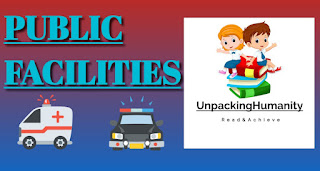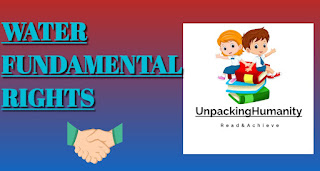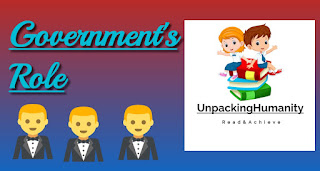PUBLIC FACILITIES
CIVICS
CLASS VIII
**Anna Nagar:**
- **Availability:** Lush and green, tap water is regular.
- **Backup:** Residents can request a water tanker on inadequate supply days.
- **Concerns:** Excessive use for lawns and regular reliance on tankers.
**Mylapore:**
- **Availability:** Faces water shortage, municipal water every two days.
- **Backup:** Private borewell used, but water is brackish.
- **Purchases:** Residents buy tanker water at a monthly cost of Rs 500-600.
**Madipakkam:**
- **Availability:** Water supplied once every four days.
- **Challenge:** Residents buy bottled water for drinking due to irregular supply.
**Saidapet Slum:**
- **Challenge:** Hutments lack bathroom and tap connection.
- **Common Tap:** Water from borewell available for 20 minutes twice a day.
- **Struggle:** Residents face scarcity and compete for limited water, especially in summer.
👊TEST YOUR KNOWLEDGE(TYK)📚
**1. What is a common challenge faced by residents in Madipakkam regarding water supply?**
- A. Excessive use for lawns
- B. Irregular supply leading to the purchase of bottled water
- C. Regular reliance on tankers
- D. Lack of tap connections in hutments
**2. How do residents in Saidapet Slum access water?**
- A. Lush and green tap water
- B. Private borewell with brackish water
- C. Water tanker requests on inadequate supply days
- D. Water from a borewell available for a limited time
**3. What distinguishes the water availability in Anna Nagar compared to Mylapore?**
- A. Availability once every four days
- B. Regular municipal water every two days
- C. Water supplied once a week
- D. Monthly cost of Rs 500-600 for tanker water
*Answers:*
1. B. Irregular supply leading to the purchase of bottled water
2. D. Water from a borewell available for a limited time
3. B. Regular municipal water every two days
**Summary:**
- **Anna Nagar:** Regular tap water, occasional tanker use, but excessive lawn watering.
- **Mylapore:** Municipal water every two days, brackish borewell, reliance on purchased tanker water.
- **Madipakkam:** Water supplied every four days, leading to reliance on bottled water.
- **Saidapet Slum:** Limited water access, shared common tap, struggle during summer, long waits for tankers.
**Water as a Fundamental Right:**
- **Importance:**
- **Essential for life and good health.**
- **Prevents water-related diseases.**
- **Water-Related Deaths:**
- **Daily Toll:** Over 1,600 Indians die, mainly children under 5.
- **Causes:** Diseases like diarrhoea, dysentery, cholera, etc.
- **Right to Water:**
- **Constitutional Basis:** Part of Right to Life under Article 21.
- **Universal Access:** Every person has the right to sufficient water at an affordable price.
- **Legal Recognition:**
- **Judicial Stand:** High Courts and Supreme Court affirm the right to safe drinking water as a Fundamental Right.
👊TEST YOUR KNOWLEDGE(TYK)📚
**1. What is the primary cause of over 1,600 daily water-related deaths in India?**
- A. Lack of legal recognition
- B. Preventable diseases like diarrhoea, dysentery, cholera
- C. Universal access to water
- D. Constitutional basis under Article 21
**2. What is the legal stand affirmed by High Courts and the Supreme Court regarding the right to water?**
- A. Lack of importance in the Constitution
- B. Denial of universal access
- C. Recognition as a Fundamental Right
- D. Legal basis for water-related deaths
**3. Which constitutional article is associated with the Right to Water?**
- A. Article 21
- B. Article 51
- C. Article 42
- D. Article 15
*Answers:*
1. B. Preventable diseases like diarrhoea, dysentery, cholera
2. C. Recognition as a Fundamental Right
3. A. Article 21
**Summary:**
- **Significance of Water:**
- Vital for life and health, prevents diseases.
- **Challenges:**
- Over 1,600 daily deaths from water-related diseases.
- **Fundamental Right:**
- Constitutional recognition under Right to Life (Article 21).
- **Legal Support:**
- Judicial affirmation by High Courts and Supreme Court for the right to safe drinking water.
**Public aFacilities:**
- **Essential Facilities:**
- **Water:** Vital for life and health.
- **Healthcare:** Access to medical services.
- **Sanitation:** Hygienic living conditions.
- **Electricity:** Power for daily needs.
- **Public Transport:** Convenient mobility.
- **Education:** Schools and colleges for learning.
- **Key Characteristic:**
- **Shared Benefits:** Once provided, benefits can be enjoyed by many people.
👊TEST YOUR KNOWLEDGE(TYK)📚
**1. What is a key characteristic of essential facilities according to the given information?**
- A. Exclusive benefits
- B. Shared benefits
- C. Limited access
- D. Individual privileges
**2. Which of the following is NOT mentioned as part of essential facilities?**
- A. Healthcare
- B. Public Transport
- C. Entertainment
- D. Education
*Answers:*
1. B. Shared benefits
2. C. Entertainment
**Summary:**
- **Essentials:**
- Water, healthcare, sanitation, electricity, public transport, education.
- **Shared Benefits:**
- Main characteristic of public facilities, serving the broader community.
**Government's Role in Providing Public Facilities:**
- **Responsibility:**
- **Providing Public Facilities:** Government's duty to ensure facilities are available to everyone.
- **Profit Motive:**
- **Government vs. Private Companies:** Private companies operate for profit.
- **Public Facilities:** Often not profitable, less interest from private companies.
- **Exceptions:**
- **Schools and Hospitals:** Private companies may be interested in some cases.
- **Affordability Issue:**
- **Water Supply Example:** Private companies may offer water at higher rates, depriving many of affordable access.
- **Basic Needs and Constitution:**
- **Right to Life:** Constitution guarantees the Right to Life for all.
- **Responsibility:** Providing public facilities is the government's responsibility.
👊TEST YOUR KNOWLEDGE(TYK)📚
**1. What is the primary motivation for private companies in providing public facilities according to the information?**
- A. Social responsibility
- B. Profit motive
- C. Altruism
- D. Government pressure
**2. In which cases are private companies mentioned to be interested in providing facilities?**
- A. Water supply
- B. Education and healthcare
- C. Transportation
- D. Electricity
*Answers:*
1. B. Profit motive
2. A. Water supply
**Summary:**
- **Government's Duty:**
- Ensure public facilities are accessible to all.
- **Profit Consideration:**
- Private companies may not be interested due to lack of profitability.
- **Exceptions:**
- Some private involvement in schools and hospitals.
- **Affordability Concern:**
- Government's role crucial to prevent deprivation based on financial constraints.
- **Constitutional Right:**
- Providing basic needs aligns with the Right to Life guaranteed by the Constitution.
**Government Funding for Public Facilities:**
- **Budgeting Process:**
- **Annual Ritual:** Government presents the budget in Parliament every year.
- **Details Included:** Accounts for past expenses and outlines planned spending for the coming year.
- **Source of Government Money:**
- **Taxes:** Main source of government revenue.
- **Types of Taxes:** Income tax, sales tax, corporate tax, etc.
- **Other Sources:** Borrowing, grants, and non-tax revenue contribute.
- **Government Budget:**
- **Expenses Allocation:** Outlines how funds will be distributed across various programs.
- **Public Facilities Funding:** Part of the budget allocates funds for public facilities.
👊TEST YOUR KNOWLEDGE(TYK)📚
**1. What is the main source of revenue for the government in the budgeting process?**
- A. Borrowing
- B. Grants
- C. Taxes
- D. Non-tax revenue
**2. What types of taxes are mentioned as contributors to the government's revenue?**
- A. Property tax, excise tax
- B. Sales tax, corporate tax
- C. Import tax, luxury tax
- D. All of the above
**3. What is a significant component of the government budget mentioned in the text?**
- A. Accounts for past expenses
- B. Planning for future taxes
- C. Allocation of funds for public facilities
- D. Borrowing details
*Answers:*
1. C. Taxes
2. B. Sales tax, corporate tax
3. C. Allocation of funds for public facilities
**Summary:**
- **Budget Presentation:**
- Yearly presentation in Parliament outlining past and future expenses.
- **Revenue Sources:**
- Mainly from taxes (income, sales, corporate), borrowing, grants, and non-tax revenue.
- **Expense Allocation:**
- Budget specifies how funds are distributed, including funding for public facilities.
**Water Supply in Chennai: Accessibility Issues**
- **Shortage Overview:**
- **Public Facility:** Water supply faces shortages in Chennai.
- **Municipal Supply:** Meets only about half the city's needs on average.
- **Unequal Distribution:**
- **Geographic Impact:** Areas closer to storage points receive more regular water supply.
- **Disparities:** Colonies farther away experience reduced water availability.
- **Impact on the Poor:**
- **Burden:** Shortfalls disproportionately affect the poor.
- **Middle-Class Coping Mechanisms:**
- **Private Solutions:** Digging borewells, purchasing water from tankers, using bottled water for drinking.
- **Affordability Concern:**
- **Safe Drinking Water:** Availability depends on financial capacity.
- **Access Limited:** People with financial means have greater access.
👊TEST YOUR KNOWLEDGE(TYK)📚
**1. What is the main cause of water shortages in Chennai, as mentioned in the text?**
- A. Inadequate municipal supply
- B. Unequal distribution to storage points
- C. Excessive private use
- D. Lack of borewells
**2. How do middle-class residents cope with water shortages in Chennai?**
- A. Relying on municipal supply
- B. Purchasing water from tankers
- C. Extracting water from private wells
- D. Accessing free bottled water
*Answers:*
1. A. Inadequate municipal supply
2. B. Purchasing water from tankers
**Summary:**
- **Challenges:**
- Water shortage in Chennai with municipal supply meeting only half the needs.
- **Geographic Disparities:**
- Closer areas receive more regular supply, impacting those farther away.
- **Impact on the Poor:**
- Disproportionate burden on the economically disadvantaged.
- **Middle-Class Coping:**
- Affordability allows for private solutions.
- **Affordability Concern:**
- Availability of safe water linked to financial capacity, contradicting the goal of universal access.
**Challenges in Chennai and Beyond:**
- **Common Scenario:**
- **Not Unique:** Water shortages during summer are widespread in Indian cities.
- **Private Companies' Role:**
- **Expanding Presence:** Private companies fill municipal water shortages for profit.
- **Growing Trend:** Increasing reliance on private water supply solutions.
- **Inequality in Water Use:**
- **Urban Standard:** Recommended 135 litres per day per person (seven buckets) by Urban Water Commission.
- **Disparities:** Slum dwellers may have less than 20 litres per day (one bucket), while luxury hotel residents consume up to 1,600 litres per day (80 buckets).
- **Government's Role:**
- **Shortage as a Sign:** Municipal water shortage reflects perceived government failure.
- **Possible Solutions:** Some advocate for private companies to take over as a solution.
👊TEST YOUR KNOWLEDGE(TYK)📚
**1. What is the recommended urban water usage per person per day according to the Urban Water Commission?**
- A. 20 litres
- B. 80 litres
- C. 135 litres
- D. 1,600 litres
**2. What is the growing trend regarding water supply solutions in Indian cities?**
- A. Increased government intervention
- B. Decreased reliance on private companies
- C. Growing reliance on private water supply solutions
- D. Expansion of municipal water services
*Answers:*
1. C. 135 litres
2. C. Growing reliance on private water supply solutions
**Summary:**
- **Widespread Issue:**
- Water shortages during summer not limited to Chennai.
- **Private Sector Expansion:**
- Private companies stepping in to address municipal water shortages.
- **Inequality Concerns:**
- Disparities in water supply, from slums to luxury hotels.
- **Government Perception:**
- Shortages seen as a sign of government failure, leading to discussions about potential private sector involvement.
**Water Supply: Government vs. Private Involvement**
**Global Scenario:**
1. **Dominance of Government:** Worldwide, water supply is primarily a government function.
2. **Universal Access:** Some areas globally have achieved universal access through public water supply.
**Private Involvement Challenges:**
3. **Rising Prices:** Instances of private takeover leading to unaffordable water prices.
4. **Protests and Riots:** Examples like Bolivia show public backlash, prompting government intervention.
**Success and Challenges in India:**
5. **Government Success Cases in India:**
- **Mumbai:** Water charges cover expenses.
- **Hyderabad:** Improved coverage and revenue collection.
- **Chennai:** Initiatives for rainwater harvesting and some private involvement under government control.
**Constitutional Right to Public Facilities:**
- **Indian Constitution Recognition:**
- Right to water, health, education part of Right to Life.
- Government's major role is ensuring public facilities for all.
**Challenges in Implementation:**
- **Supply Shortages and Distribution Inequities:**
- Towns and villages under-provided compared to metros.
- Poor localities under-serviced compared to wealthy ones.
**Conclusion:**
- **Private Handover Not the Solution:**
- Handing over to private companies doesn't address equity and citizen rights.
- **Equitable Solution Needed:**
- Emphasizes the importance of ensuring citizens' rights to public facilities in an equitable manner.
👊TEST YOUR KNOWLEDGE(TYK)📚
**1. What is a common global scenario regarding water supply?**
- A. Private companies dominate water supply globally.
- B. Public water supply is primarily a government function.
- C. Universal access is mainly achieved through private involvement.
- D. Governments rarely play a role in water supply.
**2. What challenge is associated with private involvement in water supply globally?**
- A. Decreasing water prices
- B. Protests and riots
- C. Universal access
- D. Government intervention
**3. Which of the following is not mentioned as a success case of government involvement in water supply in India?**
- A. Mumbai
- B. Hyderabad
- C. Chennai
- D. Delhi
**4. According to the Indian Constitution, which right encompasses the right to water, health, and education?**
- A. Right to Equality
- B. Right to Freedom
- C. Right to Life
- D. Right against Exploitation
*Answers:*
1. B. Public water supply is primarily a government function.
2. B. Protests and riots
3. D. Delhi
4. C. Right to Life
**Summary:**
- Globally, water supply is primarily a government function.
- Some areas globally achieve universal access through public water supply.
- Private involvement can lead to rising prices and public protests.
- India has seen success in some government-controlled water departments.
- Constitutional recognition of the right to public facilities emphasizes the government's role.
- Challenges include supply shortages, distribution inequities, and under-serviced localities.
- Handing over to private companies isn't seen as a solution; an equitable approach is needed.
THANK YOU❤
PLEASE,
FOLLOW, LIKE AND COMMENT!








